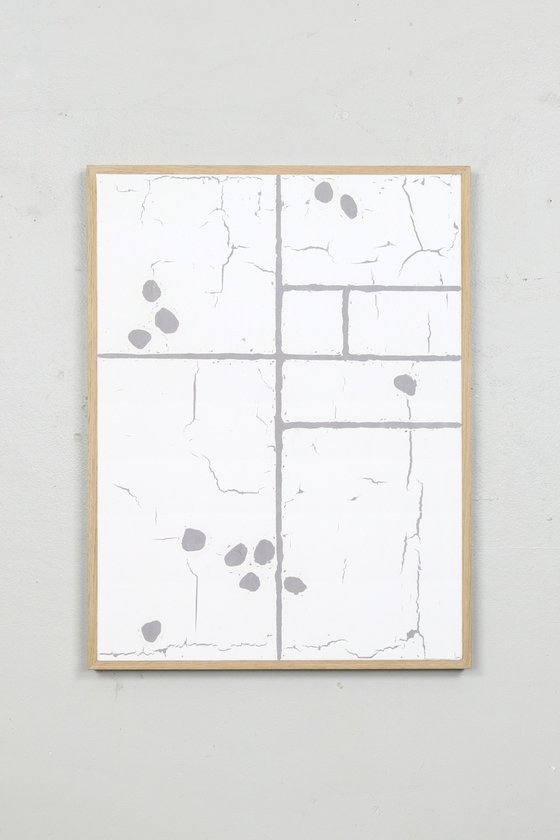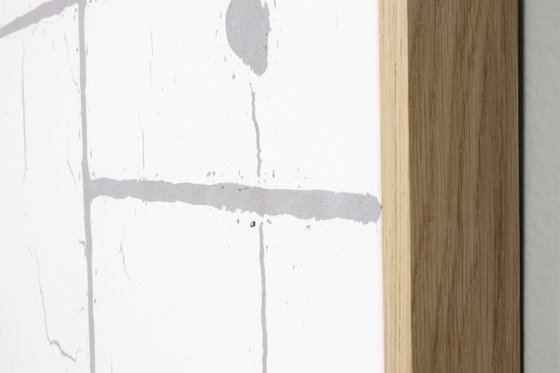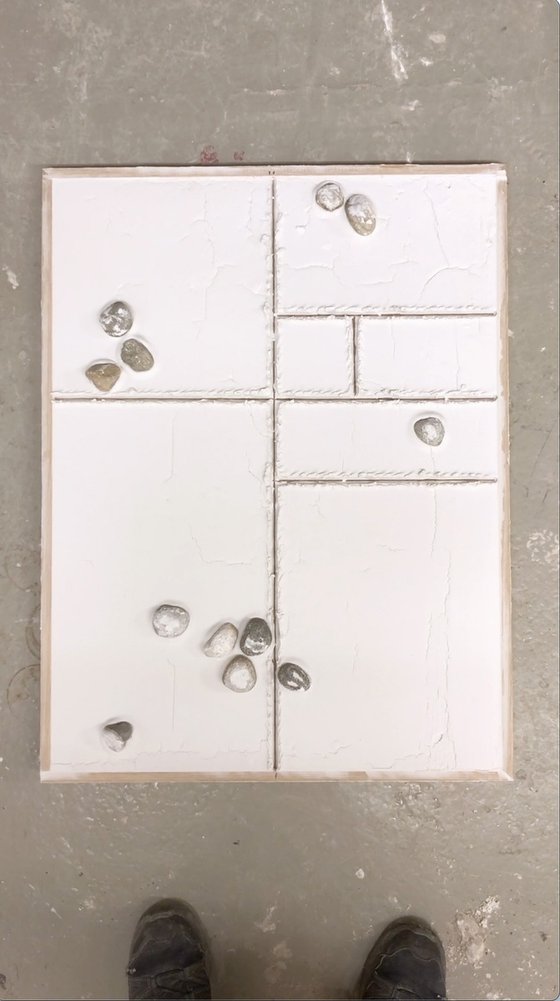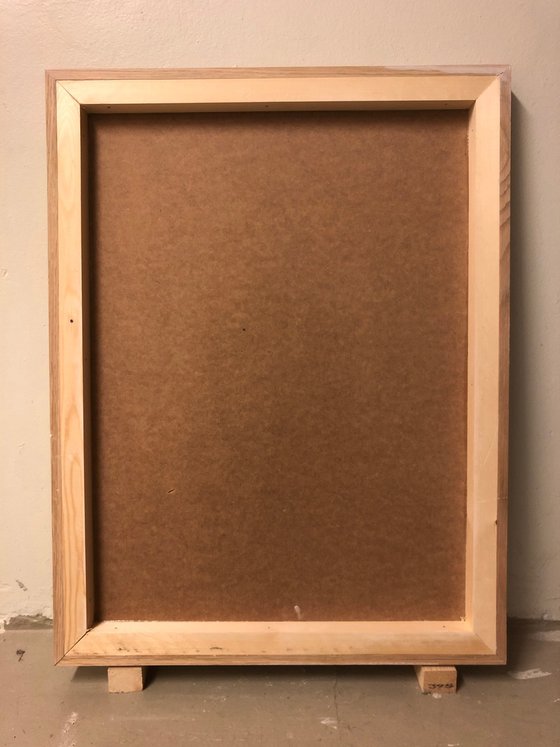Original artwork description:
My works are not painted but cast in oak panels using standard wall filler.
This work is titled after the cognitive bias called Extension Neglect. It means judging after only a tiny portion of a sample or not considering it in the long run. One example is hyperbolic discounting—when we choose food for next week, we choose healthy. When we choose food for today, we go for chocolate.
The work's composition is inspired by the floor plan of my old apartment in the building where I have my studio. It was built in 1936 by OBOS, the city's collective housing association—a typical example of the social housing projects associated with the strong social democratic system of that time. It is well-planned and built. Another association is, of course, the modernist works by Piet Mondrian.
Social Engineering
The works in the series feature stone imprints and a composition made with rulers and/or compasses, the instruments used by architects and engineers to divide space. The term social engineering has mainly been used to describe how socialist states tried to indoctrinate their citizens. However, it also played an integral part in constructing the Scandinavian welfare society in the 20th century. Extensive housing projects and health, education, and pension system reforms reshaped how people lived and viewed themselves. Introducing childcare and maternity care changed family structures and views on gender and identity. The period coincides with modernism in art and architecture, which the series references.
In recent years, the term has become relevant in digital security, political campaigns, public relations and similar fields that seek to influence individual decision-making by exploiting our cognitive biases. These are examples of areas where our judgement systematically deviates from a rational basis. But at the same time, they can be understood as descriptions of different aspects of human nature: stubborn, impulsive, emotional, safety-oriented, unforgiving, etc. They make us vulnerable and manipulable, but we lose our character and uniqueness without them.
All works in the series are titled after cognitive biases in belief formation, decision-making and human behaviour.
Materials used:
Filler on board, oak panel
Tags:
#abstract #painting #minimalism #oak frame #filler#508 Extension Neglect (2023)
Painting
by Johan Söderström
1 Artist Reviews
£1,290.75
- Painting on Panel / Board / MDF
- One of a kind artwork
- Size: 64 x 84 x 5cm (framed)
- Framed and ready to hang
- Signed on the back
- Style: Abstract
- Subject: Abstract and non-figurative
Original artwork description
My works are not painted but cast in oak panels using standard wall filler.
This work is titled after the cognitive bias called Extension Neglect. It means judging after only a tiny portion of a sample or not considering it in the long run. One example is hyperbolic discounting—when we choose food for next week, we choose healthy. When we choose food for today, we go for chocolate.
The work's composition is inspired by the floor plan of my old apartment in the building where I have my studio. It was built in 1936 by OBOS, the city's collective housing association—a typical example of the social housing projects associated with the strong social democratic system of that time. It is well-planned and built. Another association is, of course, the modernist works by Piet Mondrian.
Social Engineering
The works in the series feature stone imprints and a composition made with rulers and/or compasses, the instruments used by architects and engineers to divide space. The term social engineering has mainly been used to describe how socialist states tried to indoctrinate their citizens. However, it also played an integral part in constructing the Scandinavian welfare society in the 20th century. Extensive housing projects and health, education, and pension system reforms reshaped how people lived and viewed themselves. Introducing childcare and maternity care changed family structures and views on gender and identity. The period coincides with modernism in art and architecture, which the series references.
In recent years, the term has become relevant in digital security, political campaigns, public relations and similar fields that seek to influence individual decision-making by exploiting our cognitive biases. These are examples of areas where our judgement systematically deviates from a rational basis. But at the same time, they can be understood as descriptions of different aspects of human nature: stubborn, impulsive, emotional, safety-oriented, unforgiving, etc. They make us vulnerable and manipulable, but we lose our character and uniqueness without them.
All works in the series are titled after cognitive biases in belief formation, decision-making and human behaviour.
Materials used:
Filler on board, oak panel
Tags:
#abstract #painting #minimalism #oak frame #fillerReturns and refunds
We want you to love your art! If you are not completely satisfied with your purchase you can return it free within 14 days, no questions asked. Learn more
Artist Reviews (1)
This artwork is sold by Johan Söderström from Norway











